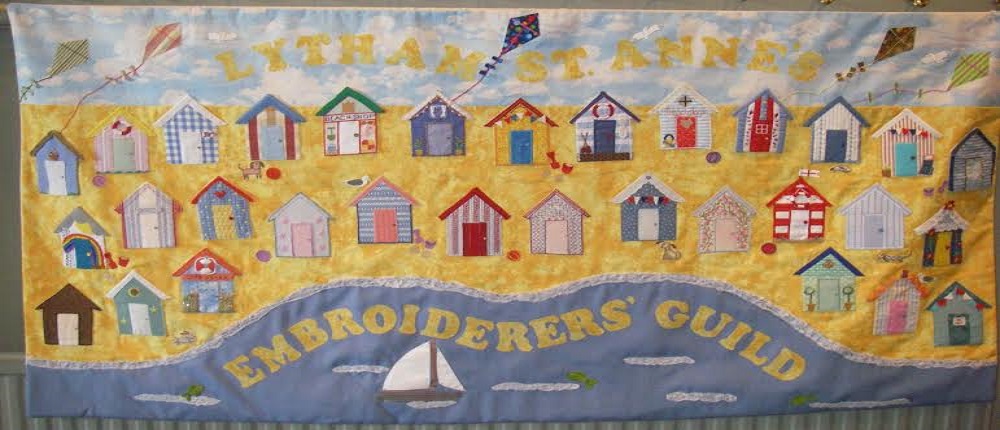At the January meeting of the Lytham St Annes Embroiderers Guild we were taught some lovely 2D stitches by our long time member Barbara.
Embroidery stitches have 3 dimensions to them - the first type 1D; are flat across the surface fabric, examples are Black Work and Cross Stitch.
2D stitches look as if they are on top of the surface as if they are raised from the fabric (some people get confused and call these 3D) but 3D embroidery uses a base of wire or felt so that it can stand alone, away from the fabric and is called Stump Work.
This yellow pansy below is an example of stump work. Wire was used to form the shape of the petals and sewn around with Button Hole Stitch then Long and Short stitches used to make the petals which were then cut away from the foundation fabric very close to the button hole stitches.
 |
| Absolutely Beautiful Stump Work |
Barbara had stitched up so many samples using different types of thread, string and raffia that it will take several posts to show you everything.
Here she is with a huge frame to show us how to do the first stitch which was Palestrina Stitch also known Double Knot stitch, Tied Coral, Old English Knot stitch or Smyrna Stitch.
 |
| When she wears that white apron she means business |
Here she is in action with the Huge Teaching Frame.
A close up of the stitches we were learning - Palestrina, Raised Stem Band, Raised Chain Stitch, Woven Pique, French Knots and Spiders Web.
 |
| The Palestrina Knot using Stranded Floss, Pearl Cotton and Polypropylene String. |



